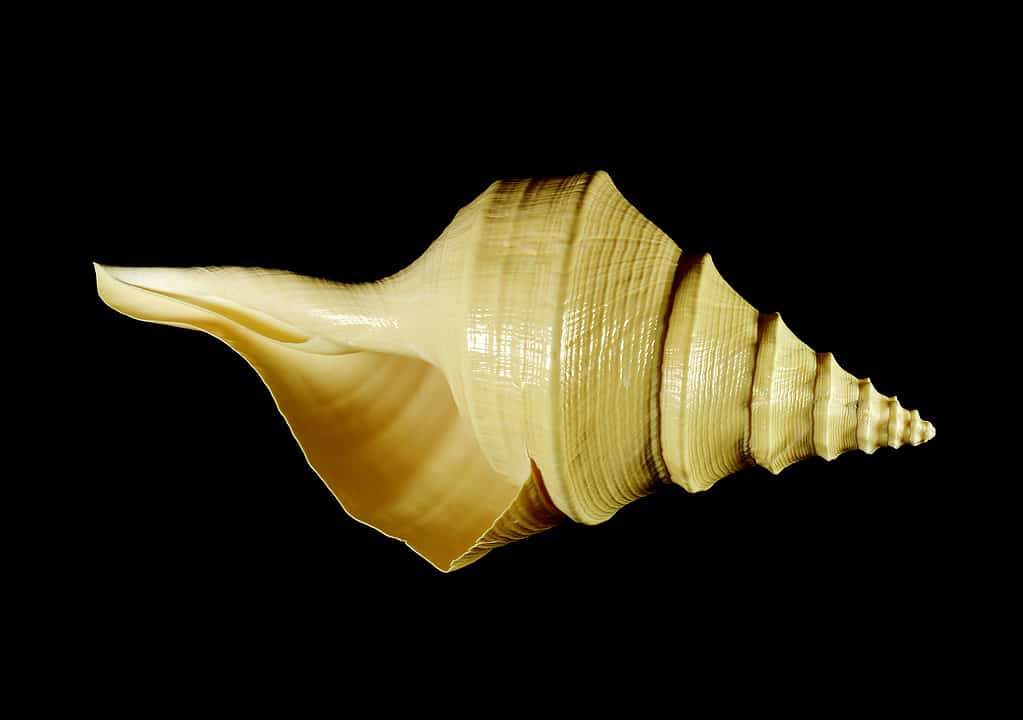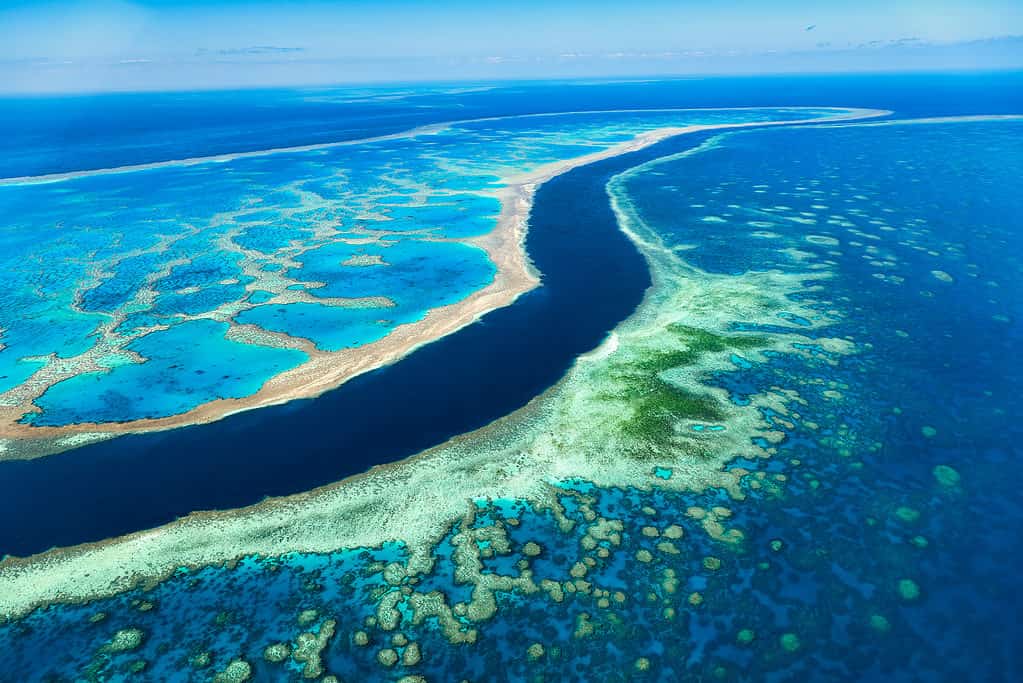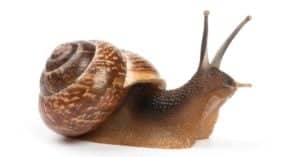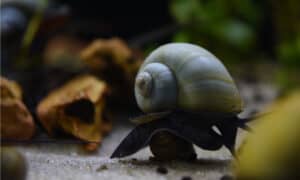Snails come in all shapes and sizes, from the tiny ballpoint-sized Angustopila psammion to the hefty giant African land snail. But did you know there is a species of snail that is as big as a small child? Behold, the Australian trumpet snail! In this article, we’ll break down all of the basics about this incredible, massive snail species.
What is the Australian Trumpet Snail?
One of the biggest sea snails in the world is the Australian trumpet, also known as the Syrinx aruanus or the Australian trumpet snail. Due to its size and unusual appearance, it is sometimes referred to as the giant trumpet.
The family Turbinellidae includes this snail species. It is the only member of the genus Syrinx. Along with other sections of the Indo-Pacific area, it is present in the waters surrounding northern Australia, especially those near the Great Barrier Reef. Primarily, coral reefs and shallow coastal waters in tropical and subtropical marine habitats are home to these snails. They live in sandy or muddy substrates, where they partially or totally bury themselves.
The Australian trumpet snail is a predator, meaning it eats other marine invertebrates including worms, bivalves, and other mollusks. It captures and swallows its prey using a lengthy proboscis.
The Australian trumpet snail, like most snails, undergoes a sequential hermaphrodite change in which it begins as a male and subsequently becomes a female. They reproduce by depositing eggs, which grow into larvae that float freely until they settle and become adult snails.
The Australian trumpet snail is a fascinating species notable for its size and distinct look. It may not, however, be as well known or generally recognized as some other marine creatures due to its restricted distribution and particular ecological demands. To put it simply, we do not know much about this snail species as of yet.

How Big Do Australian Trumpet Snails Get?
These enormous sea snails may grow to 35 inches in length and weigh up to 40 pounds. That’s easily the size of a small child! The Australian trumpet snail is considered the world’s largest gastropod species and possibly the biggest and heaviest snail currently living. Due to its exceptional size, the shell itself is widely recognized among shell collectors, but very little is yet known about the ecology and behavior of the species.
Are Australian Trumpet Snails Extinct?
There is no current list of extinct species that includes the Australian trumpet snail. In the maritime habitats of northern Australia and other areas of the Indo-Pacific region, it is acknowledged as a living species. Although there aren’t many living examples for us to study, experts do think that this species is still alive and growing in numbers.
The status of a species can, however, vary over time owing to a variety of circumstances. Such circumstances include habitat loss, environmental changes, and human activity. Our view of a species’ population and distribution can also change as a result of new scientific knowledge and findings.

The Australian trumpet snail is quite elusive, and there are few to no images of living species, outside of photos of their shells (pictured).
©iStock.com/jon841
Australian Trumpet Snail Appearance
The Australian trumpet snail is considered to be one of the biggest or possibly the biggest sea snail in the world. It has the potential to grow to remarkable lengths of over three feet. As a result, it has the longest shell of any known living snail species.
The Australian trumpet snail has a conical shell that resembles a French horn or a trumpet. It is usually spiral-shaped, smooth, and shiny. To shield the fragile body of the snail from harm, the shell grows to be fairly thick and robust. The shell’s coloring is typically light, ranging from cream to light brown, with sporadic darker patterns. The inside of the shell is usually iridescent and pearly.
The Australian trumpet snail’s elongated, soft body is propelled by a huge, muscular foot that is used as its primary form of movement. When the snail moves, the foot can emerge from the shell to push it forward. Sensory tentacles on the head aid the snail in detecting its environment and locating prey.
The proboscis of this species is lengthy and retractable. For eating, the snail uses its proboscis to catch and swallow its prey, which is mostly made up of other marine invertebrates. The Australian trumpet snail’s body is generally light in color, with shades ranging from white to light beige to grey. The snail’s coloring aids in blending into its muddy or sandy environment. It’s important to remember that individuals within a species can differ in appearance, thus not every Australian trumpet snail will have the same coloration or shell form.
Australian Trumpet Snail Habitat and Ecology
This fascinating and massive snail is primarily found in tropical and subtropical coastal habitats. Along with other sections of the Indo-Pacific region, it may be found in the seas surrounding northern Australia, especially those near the Great Barrier Reef. These snails live in sandy or muddy soils and can be found partially or entirely buried.
The Australian trumpet snail is a marine predator. It consumes worms, bivalves, and other mollusks as well as other marine invertebrates. It engulfs and catches its victim with its lengthy proboscis. To reach and seize food, the proboscis can stretch outward from the shell. Australian trumpets are predators that help control populations of other species. They are an important component of the complex food chain that makes up their marine ecology. Just as well, the composition of the sediment and the cycling of nutrients in their environment might also be impacted by their feeding and burrowing activity.
Australian Trumpet Snail Reproduction and Predators
This snail transforms from male to female in a sequential hermaphrodite process. This implies that a specimen can initially operate as one sex and afterward switch to another sex. They deposit eggs to reproduce. Veligers, or this snail’s free-swimming larvae, are produced from the eggs. As they age, these veligers settle on appropriate soils and go through metamorphosis to become young snails.
There isn’t much information out there regarding particular predators that prey on Australian trumpet snails. However, they could come across larger marine predators like fish or certain crustaceans. They might be harmed by a number of environmental factors, including habitat loss, pollution, and climate change, just like many marine creatures.
In order to completely comprehend the intricate ecology of the Australian trumpet snail and its unique ecological responsibilities within its ecosystem, it is important to emphasize that more study into these elusive creatures is necessary.

The Australian trumpet snail lives in sandy and muddy regions of the Great Barrier Reef (pictured).
©iStock.com/Cavan Images
Australian Trumpet Snail Relationship with Humans
This species is targeted for fishing due to its enormous shell, edible meat, and its use as fishing bait. The shell is utilized as a source of lime and is marketed for shell collectors. Its shell can also be used to carry water.
An “imina” is a half-moon-shaped nose pin constructed from the Australian trumpet snail’s shell that was worn (or still is worn) by the Aboriginal Australian people who inhabited the Pennefather River in Queensland. Only men may use this nose pin; women use a piece of grass instead. If the shell is still fresh, it can be used right away to create one of these nose pins. However, if it is dry, the shell must first be submerged in water for two to three days. Then, using a stone, a section of the shell close to the suture and the keel on the body whorl is removed, and it is then crushed down with water. The resultant item, which resembles a rib, serves as the nose pin.
While the Australian trumpet snail still has cultural significance to the Aboriginal Australian peoples, the main interest in this snail comes down to shell collectors who scavenge for the empty shells of these animals along Australia’s coast.
The photo featured at the top of this post is © Guillermo Guerao Serra/Shutterstock.com
Thank you for reading! Have some feedback for us? Contact the AZ Animals editorial team.







